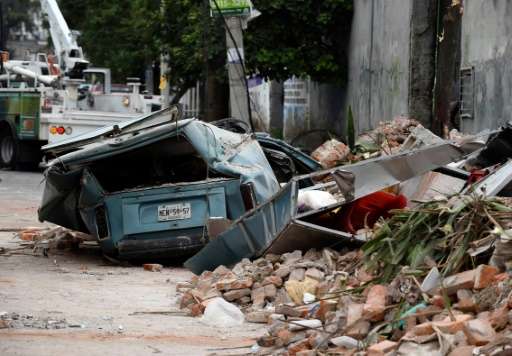By the time Mexico City residents felt the first shockwaves from the 8.2 magnitude quake, many had already made it onto the streets
Sirens wailed across Mexico City late Thursday warning its estimated 20 million population of a rapidly approaching quake from the Pacific, the latest use of its effective early warning system.
By the time alarmed residents felt the first shockwaves from the 8.2 magnitude quake, many had already made it onto the streets or into parks, well away from trembling and swaying buildings.
For the past two decades, Mexico's seismic alert system, known by the initials CIRES, has provided the city with an early warning of disaster, using a hundred sensors placed along its Pacific coast, where the risk of an earthquake is greatest.
It can take a minute for seismic waves from a quake's epicenter to reach the capital, several hundred kilometers away. Even at that distance, Mexico City is vulnerable because it sits on an ancient lakebed and the relatively loose soil makes it prone to severe shaking.
Once the earthquake is detected, the system sets off a radio wave that triggers alarms in schools, ministries and offices, and automatically interrupts radio broadcasts.
Such technology was not available at the time of the 8.1 magnitude earthquake of September 19, 1985, which killed more than 10,000 people and razed large swathes of the city.
Radio waves
The servers used by the CIRES association are installed in an old three-storey house and are on a constant electronic watch for any ground vibrations that will trigger an alarm.
On a screen, technicians can monitor a real-time display of the different sensors represented by light diodes.
Since the system was launched in 1993, CIRES has issued more than 60 earthquake alerts of at least 6.0 magnitude.
An alarm system is not an absolute guarantee of safety, especially if it is triggered in the middle of the night when most of the population is asleep.
Luckily, though the latest quake struck late Thursday night, the population was still largely awake and able to move to safety relatively quickly.
Smartphone alarm
Smartphone seismic technology has also come to the fore in Mexico in recent years, and users can receive alerts via applications such as SkyAlert or Alerta Sismica DF.
Two seconds after an earthquake, SkyAlert is supposed to ping a "Seismic Alert!" to mobile phones.
The application, launched in 2013, was initially connected to the CIRES system, but its young founder Alejandro Cantu has since bought his own sensors from Japan and deployed them along the Pacific coast.
The app quickly became popular and within a couple of years its free version had more than three million users. A paid version allows users to customize alerts.
To send out warnings, the application uses a high-speed internet network instead of telephone lines, a guarantee of reliability according to its founder.
However, when the quake, described as the biggest in a century by the country's president, struck on Thursday, the SkyAlert app was ominously silent.
© 2017 AFP






















